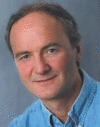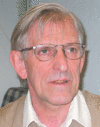Coupling the cell cycle to cell growth
- PMID: 12897798
- PMCID: PMC1326335
- DOI: 10.1038/sj.embor.embor895
Coupling the cell cycle to cell growth
Abstract
In order to multiply, both prokaryotic and eukaryotic cells go through a series of events that are collectively called the cell cycle. However, DNA replication, mitosis and cell division may also be viewed as having their own, in principle independent, cycles, which are tied together by mechanisms extrinsic to the cell cycle--the checkpoints--that maintain the order of events. We propose that our understanding of cell-cycle regulation is enhanced by viewing each event individually, as an independently regulated process. The nature of the parameters that regulate cell-cycle events is discussed and, in particular, we argue that cell mass is not such a parameter.
Figures





Similar articles
-
Prevention of DNA re-replication in eukaryotic cells.J Mol Cell Biol. 2011 Feb;3(1):13-22. doi: 10.1093/jmcb/mjq052. J Mol Cell Biol. 2011. PMID: 21278447 Free PMC article. Review.
-
Cell cycle control in pediatric neuro-oncology.Pediatr Neurosurg. 1997 May;26(5):226-35. doi: 10.1159/000121197. Pediatr Neurosurg. 1997. PMID: 9440492 Review. No abstract available.
-
Overview of the cell cycle.Curr Protoc Cell Biol. 2001 May;Chapter 8:Unit 8.1. doi: 10.1002/0471143030.cb0801s00. Curr Protoc Cell Biol. 2001. PMID: 18228386
-
Genes involved in the initiation of DNA replication in yeast.Int Rev Cytol. 2002;212:133-207. doi: 10.1016/s0074-7696(01)12005-x. Int Rev Cytol. 2002. PMID: 11804036 Review.
-
Protein feature based identification of cell cycle regulated proteins in yeast.J Mol Biol. 2003 Jun 13;329(4):663-74. doi: 10.1016/s0022-2836(03)00490-x. J Mol Biol. 2003. PMID: 12787668
Cited by
-
Protein concentration fluctuations in the high expression regime: Taylor's law and its mechanistic origin.Phys Rev X. 2022 Jan-Mar;12(1):011051. doi: 10.1103/physrevx.12.011051. Epub 2022 Mar 17. Phys Rev X. 2022. PMID: 35756903 Free PMC article.
-
MioC and GidA proteins promote cell division in E. coli.Front Microbiol. 2015 May 28;6:516. doi: 10.3389/fmicb.2015.00516. eCollection 2015. Front Microbiol. 2015. PMID: 26074904 Free PMC article.
-
AspC-mediated aspartate metabolism coordinates the Escherichia coli cell cycle.PLoS One. 2014 Mar 26;9(3):e92229. doi: 10.1371/journal.pone.0092229. eCollection 2014. PLoS One. 2014. PMID: 24670900 Free PMC article.
-
Division in Escherichia coli is triggered by a size-sensing rather than a timing mechanism.BMC Biol. 2014 Feb 28;12:17. doi: 10.1186/1741-7007-12-17. BMC Biol. 2014. PMID: 24580833 Free PMC article.
-
A constant size extension drives bacterial cell size homeostasis.Cell. 2014 Dec 4;159(6):1433-46. doi: 10.1016/j.cell.2014.11.022. Cell. 2014. PMID: 25480302 Free PMC article.
References
-
- Bernander R. ( 1994) Universal cell cycle regulation? Trends Cell Biol., 4, 76–79. - PubMed
-
- Carlson C.R., Grallert B., Stokke T. & Boye E. ( 1999) Regulation of the start of DNA replication in Schizosaccharomyces pombe. J. Cell Sci., 112, 939–946. - PubMed
-
- Conlon I.J., Dunn G.A., Mudge A.W. & Raff M.C. ( 2001) Extracellular control of cell size. Nature Cell Biol., 3, 918–921. - PubMed
-
- Cooper S. & Helmstetter C.E. ( 1968) Chromosome replication and the division cycle of Escherichia coli B/r. J. Mol. Biol., 31, 519–540. - PubMed
Publication types
MeSH terms
Substances
LinkOut - more resources
Full Text Sources

